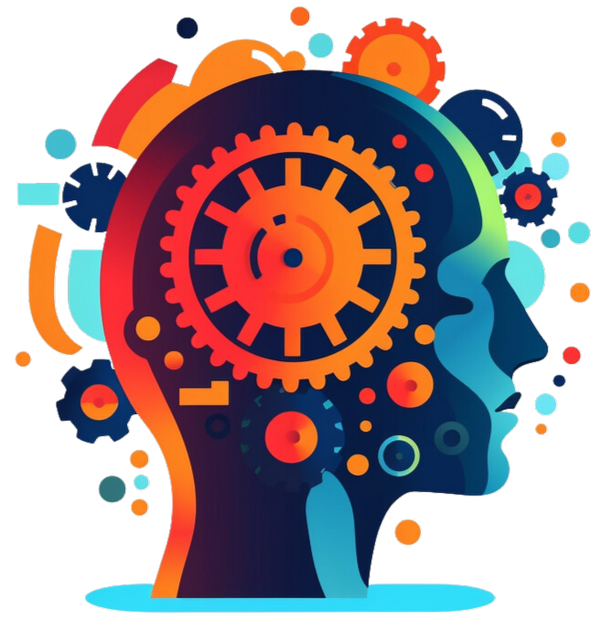
The dark corner: The dark side of ADHD symptoms
Share
Certainly, people with ADHD are often creative, humorous, and flexible. But the typical ADHD symptoms unfortunately also lead to behaviors that can lead to self-sabotage and exclusion. A film noir-style overview.
At first glance, everything seems very transparent: people with ADHD are primarily noticeable due to their hyperactivity (ADHD-H) or their inner restlessness (ADHD-I); they are noticeably impulsive and struggle with attention problems when performing routine tasks.
However, there are some less obvious signs of ADHD that even those diagnosed with it are unaware of. These symptoms are often well camouflaged behind the three main symptoms:

“What the hell are we supposed to do?” (Decision Block)
People suffering from ADHD can sometimes find themselves in a state of total inability to make decisions in situations that require quick decisions or dealing with a lot of information.
These decision-making difficulties appear to be more common in ADHD-I. High levels of norepinephrine block the prefrontal cortex . This blockage leads to these difficulties because the PFC is central to weighing options.
Such mental blocks can also be symptoms of severe stress. The situation becomes particularly severe during "emotional earthquakes" such as a breakup or heartbreak. Rational thinking then completely fades into the background, and activities like office work become a nonstop ordeal.

“This is really unbearable!” (Hypersensitivity HS)
People with ADHD are often hypersensitive , either emotionally or physically. If you have ADHD, for example, you may react with extreme hurt to unfounded criticism. This may be viewed as completely devaluing, and you may strongly doubt your partner's love for you, etc.
Children with ADHD often stand out because their clothes "have to be just right." Here, the shoe pinches, the turtleneck sweater itches unbearably and is angrily thrown into the corner, the underwear seems to have seams that cut in and cause chafing.
The frontal lobe is also important here: Too little dopamine (neurotransmitter) there and too much of it in the older brain regions (limbic system) quickly leads to a "Stone Age short circuit." The options then are often "fight," "flight," or "freeze" (or dissociation).

“It’s not late at night, it’s just early in the morning” (sleep problems/mobile phone addiction)
If you have ADHD, there's a good chance you also suffer from sleep problems . This doesn't always mean insomnia or poor sleep. You can also binge on a Netflix series late into the night or spend hours on your smartphone obsessing over something without even noticing how time passes. This is because your smartphone, TV, computer, etc., give you a dopamine hit (> inner peace).
Paradoxically, stimulants in ADHD usually lead to mental calming rather than motor stimulation. People with ADHD easily fall asleep after a double espresso—or after an evening dose of Ritalin/amphetamine-based medication, which would cause palpitations and "standing in bed" in neurotypical individuals.

"That's not all. There's a rat on the team" (comorbidities)
People with untreated ADHD are at risk for mental illnesses, including anxiety, bipolar disorder, depression, and substance abuse problems. These so-called "comorbidities" are a physical and mental response to the constantly elevated stress levels. Over 80 percent of adults with ADHD suffer from at least one comorbid mental illness, and 60 percent suffer from several .
Adults with undiagnosed/untreated ADHD also have a significantly increased risk of substance abuse. A review of the literature reveals high rates of alcohol abuse (17 to 45 percent) and drug abuse (9 to 30 percent). This phenomenon is referred to as "self-medication." It can sometimes disappear overnight if those affected by ADHD seek professional support—and find a medication that they tolerate well in everyday life .

“Were you intimate with the suspect, Spencer?” (Risk Behavior)
Girls and women with ADHD are significantly more likely to experience unwanted pregnancies. Sexually transmitted diseases are also more common. The constant " search for thrills " ( sensation seeking) is a cross-gender phenomenon in ADHD.
The risk of being involved in a traffic accident is three times higher for children with ADHD than for children without attention deficit or hyperactivity disorder. Adult ADHD patients are more likely to be involved in serious car accidents, which may also be due to poorer impulse control.
After all , 20 percent or more of inmates in prisons have been diagnosed with ADHD , compared to just 5 percent in the general population. On the one hand, the syndrome promotes risky behavior if left untreated; on the other hand, people with ADHD are also disproportionately more likely to experience rejection, bullying, and social exclusion—which, in turn, leads to frustration and aggression.
Reading is boring?
